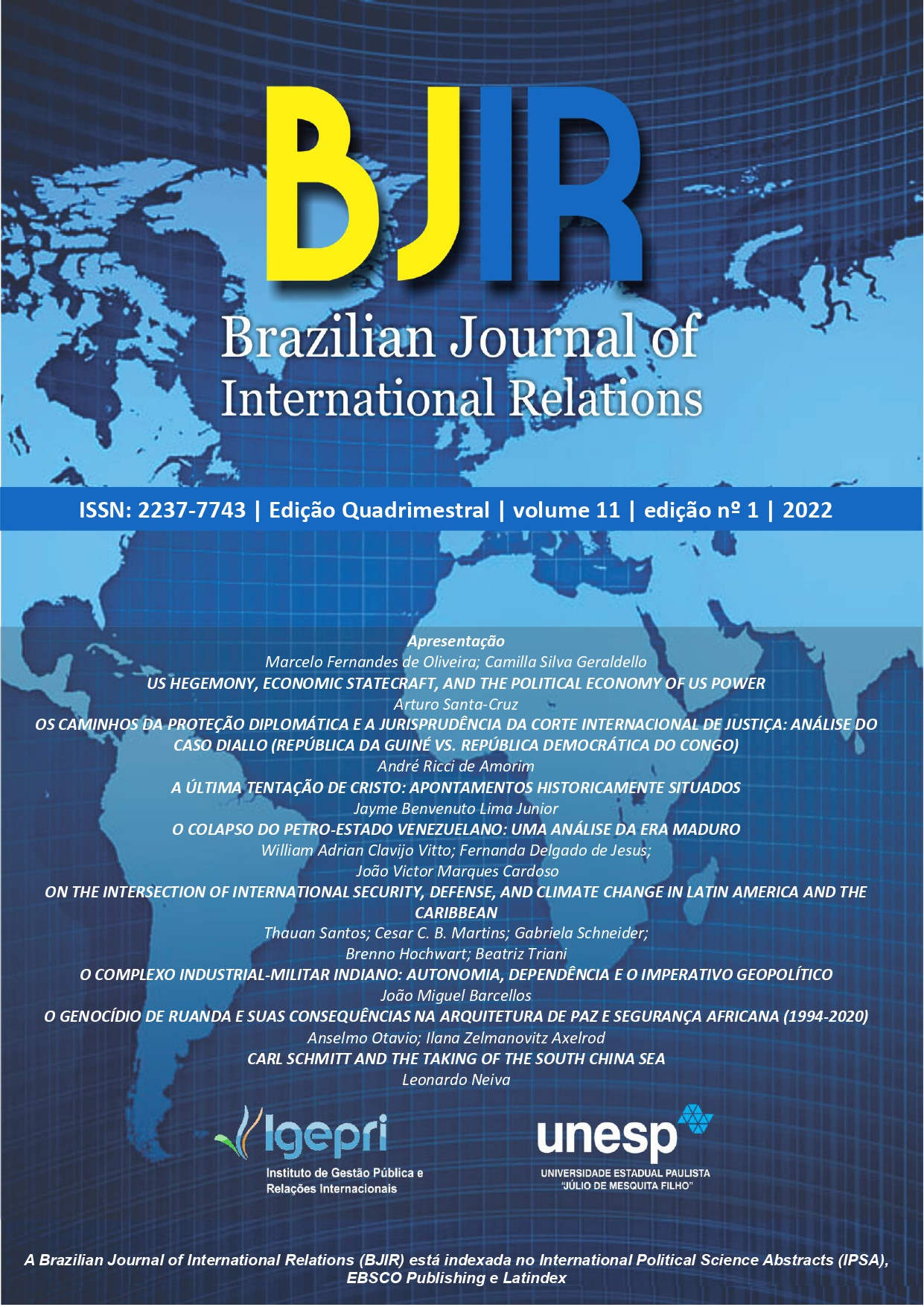On the Intersection of International Security, Defense, and Climate Change in Latin America and the Caribbean
DOI:
https://doi.org/10.36311/2237-7743.2022.v11n2.p282-308Keywords:
defense, international security, climate change, natural disasters, environment, Latin America and the CaribbeanAbstract
The purpose of this article is to show how the worsening of natural disasters due to climate change is considered as a growing threat on the security and defense agenda. To this end, a literature review is initially carried out, showing that this agenda tends to give little or less importance to this threat, often ignoring them. Then, we carry out a case study of ten Latin America and the Caribbean (LAC) countries - Argentina, Brazil, Chile, Colombia, Cuba, Ecuador, Haiti, Mexico, Peru and Venezuela -, indicating evidence and future impacts of the worsening of this phenomenon at the regional level. The data are retrieved from EM-DAT, OCHA, UNDP, UNDRR, IPCC, WMO and World Bank, covering the 2000-2019 period. Finally, we accomplish a documentary analysis of these ten LAC countries analyzing how their main high-level official defense documents address issues related to climate change, natural disasters, and the environment. Although climate change requires that the governments adapt to more frequent natural disasters, we conclude that is not possible to argue that there is a close relationship between LAC countries that suffer most from such threats with how much high-level defense documents deal with it.







